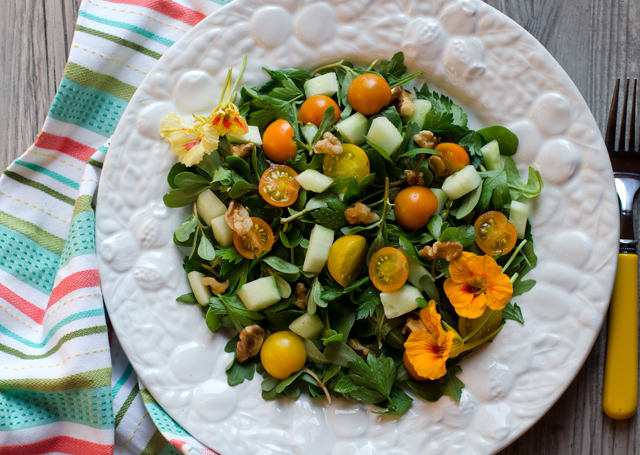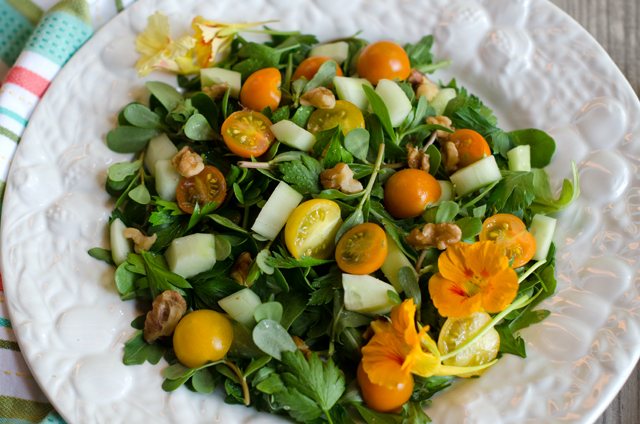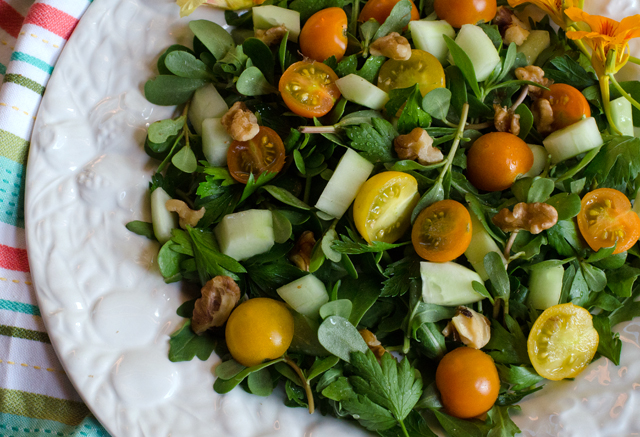The next time you are weeding, take a second look, you may be unintentionally pulling out the most nutritious green in your garden. Purslane, also known as duckweed, fat weed, little hogweed and pursley, is the only weed that can claim “superfood” status. Purslane is a rare plant source of omega 3 fatty acids, found in fish and flax seeds. It is also a good source of vitamins A, C and B, magnesium, potassium, calcium and iron. Did I mention it’s low in calories and a good source of fiber? Not bad for a plant that is an uninvited guest everywhere from fertile garden soil to the cracks in your driveway.
Purslane looks a bit like a miniature jade plant with small oval-shaped fleshy leaves that grow on thick succulent stems. Early season purslane leaves and stems are tender and edible, snip branchlets from heavier stems. The plant produces yellow flowers that will eventually produce tiny black seeds. Later in the summer separate larger leaves from mature stems. Most important, be sure you are harvesting purslane from areas that are not treated with herbicides. When in doubt, don’t pick!
Purslane is native to India and Persia and is widely used in both cuisines. In Mexico purslane is known as verdolagas where it is combined with pork to make a classic stew. Purslane’s succulent-like leaves have a refreshingly crisp texture with a slightly tart finish. You can use it raw in salads or cooked as a side dish.
Purslane is abundant in our garden this year. I am using it as a “transitional green” between the greens we harvested for salads in the spring and the new crop that will be ready to pick soon. I harvest it daily but it can be kept in the refrigerator for several days. Since purslane grows so close to the ground it should be rinsed very well in several changes of water. I fill a sink with cold water and submerge the purslane and swish it around to loosen the dirt that may be attached to it. The purslane floats and the dirt (most of it) sinks to the bottom. At this point you can remove any bruised or damaged leaves. Then I lift it out and give it a second quick soak it in the salad spinner. now it is ready to spin.
In this salad, purslane is combined with a little flat leaf parsley, baby arugula (ours will be ready soon) and cucumbers and sweet Sungold tomatoes from our garden. Walnuts add a little crunch, garnish with edible nasturtium blossoms for additional color.
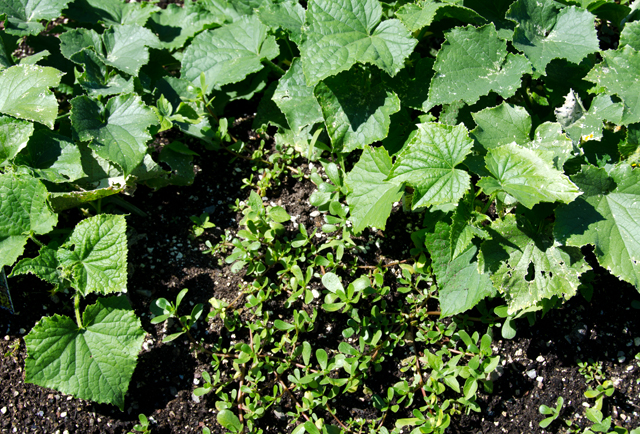
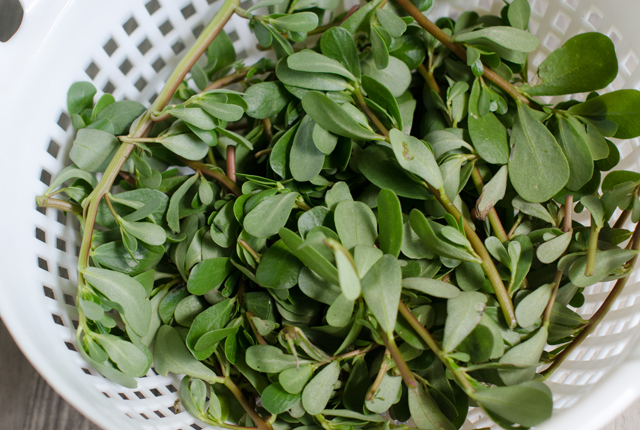
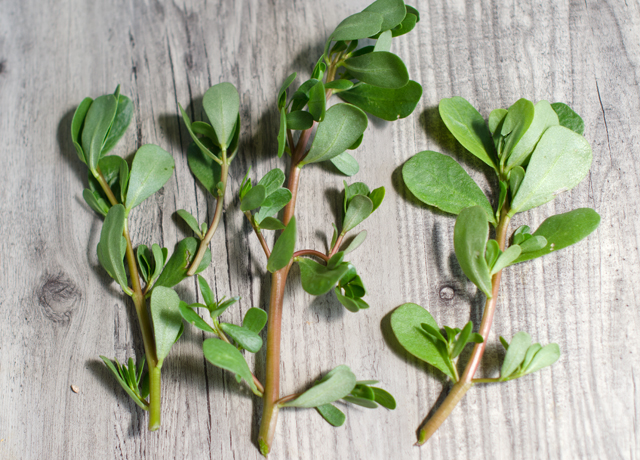
Purslane Salad
Serves two
Ingredients
- 2 c purslane leaves and tender stems
- ½ c Italian parsley leaves
- 2 c baby arugula
- 1 medium cucumber, peeled, quartered lengthwise, seeds removed, cut into 1″ pieces
- 1 dozen small tomatoes like Sungold, cut in half
- 1/3 c chopped walnuts
- lemon juice or a light vinegar
- Extra virgin olive oil
- Kosher salt and freshly ground pepper to taste
- Nasturtium blossoms for garnish.
Directions
- Combine greens, cucumber, tomatoes and walnuts in a large bowl. Sprinkle with some kosher salt and toss.
- Add a splash of lemon juice or vinegar and a tablespoon or so of olive oil and toss. Taste a leaf and correct seasoning as needed.
- Divide on two plates and season with fresh ground pepper. Garnish with nasturtium blossoms and serve.
